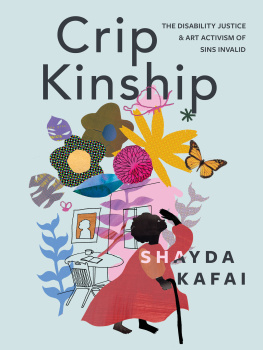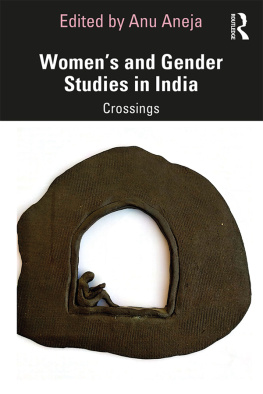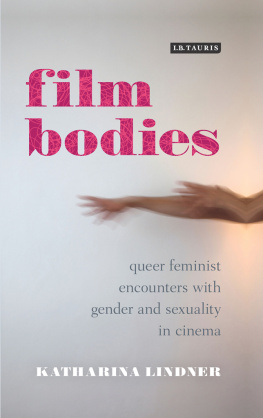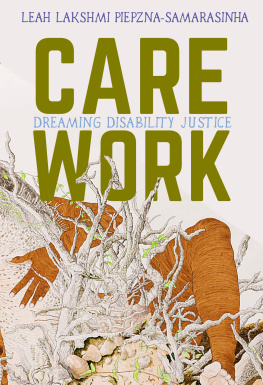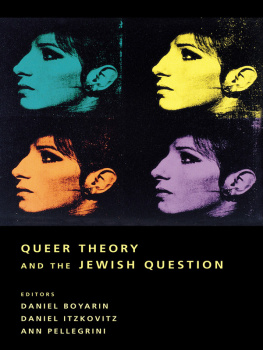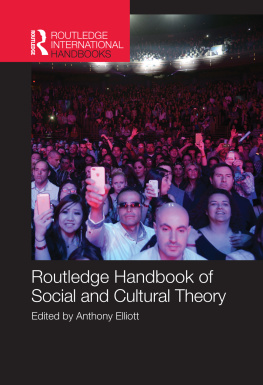Thank you for buying this ebook, published by NYU Press.
Sign up for our e-newsletters to receive information about forthcoming books, special discounts, and more!
Sign Up!
About NYU Press
A publisher of original scholarship since its founding in 1916, New York University Press Produces more than 100 new books each year, with a backlist of 3,000 titles in print. Working across the humanities and social sciences, NYU Press has award-winning lists in sociology, law, cultural and American studies, religion, American history, anthropology, politics, criminology, media and communication, literary studies, and psychology.
Crip Theory
CULTURAL FRONT
General Editor: Michael Brub
Manifesto of a Tenured Radical
Cary Nelson
Bad Subjects
Political Education for Everyday Life
Edited by the Bad Subjects Production Team
Claiming Disability
Knowledge and Identity
Simi Linton
The Employment of English
Theory, Jobs, and the Future of Literary Studies
Michael Brub
Feeling Global
Internationalism in Distress
Bruce Robbins
Doing Time
Feminist Theory and Postmodern Culture
Rita Felski
Modernism, Inc.
Body, Memory, Capital
Edited by Jani Scandura and Michael Thurston
Bending over Backwards
Disability, Dismodernism, and Other Difficult Positions
Lennard J. Davis
After Whiteness
Unmaking an American Majority
Mike Hill
Critics at Work
Interviews 19932003
Edited by Jeffrey J. Williams
Crip Theory
Cultural Signs of Queerness and Disability
Robert McRuer
Crip Theory
Cultural Signs of Queerness and Disability
Robert McRuer
Foreword by Michael Brub

NEW YORK UNIVERSITY PRESS
New York and London
www.nyupress.org
2006 by New York University
All rights reserved
Library of Congress Cataloging-in-Publication Data
McRuer, Robert, 1966
Crip theory : cultural signs of queerness and disability / Robert McRuer.
p. cm. (Cultural front)
Includes bibliographical references and index.
ISBN13: 9780814757123 (cloth : alk. paper)
ISBN10: 081475712X (cloth : alk. paper)
ISBN13: 9780814757130 (pbk. : alk. paper)
ISBN10: 0814757138 (pbk. : alk. paper)
1. Sociology of disability. 2. HomosexualitySocial aspects. 3.
HeterosexualitySocial aspects. 4. Marginality, Social. 5. Culture.
I. Title. II. Cultural front (Series)
HV1568.M37 2006
306.76601dc22 2005035209
New York University Press books are printed on acid-free paper,
and their binding materials are chosen for strength and durability.
Manufactured in the United States of America
c 10 9 8 7 6 5 4 3 2 1
p 10 9 8 7 6 5 4 3 2 1
Foreword
Another Word Is Possible
Michael Brub
Ive admired Robert McRuers work for some time now, and Crip Theory gives me all the more reason for admiration. Although over the past couple of years the overdue conversation between queer theory and disability studies has begun to produce new work that expands the parameters of both fields, most peoplemyself includedstill find it exceptionally difficult to theorize multiple forms of identity, and multiple strategies of disidentification, in conjunction with each other.
At times, it has been tempting for left cultural theorists to approach this difficulty by way of the excluded-here-is-any-account-of gambit: in response to, say, one critics groundbreaking account of race and class in Southern labor movements, another critic can reply, Xs account of race and class in Southern labor movements may be groundbreaking, but excluded here is any account of gender and sexuality that might complicate the analysis further. Very rarely is disability invoked in such circumstances. But at its best, the gambit is salutary, urging liberal, progressive, and left social critics to take account of intersecting cultural formations in all their vivid and contradictory complexity. Occasionally, however, it invites an additive approach, in which identity categories are checked off one by one as they are accounted for theoretically. I remember vividly a colleague rereading, after twenty-odd years, the Combahee River Collectives famous statement on the liberation of black women, one passage of which reads, if Black women were free, it would mean that everyone else would have to be free since our freedom would necessitate the destruction of all the systems of oppression (278), and saying to me, only half in jest: You know, they forgot about sexuality and disabilitythey only got to two systems of oppression, maybe three.
The remark was only half in jest, though, precisely because lines of inquiry that fail to attend to one thing or anothergender, race, class, sexuality, disability, age, historical context, nation, and ethnicity (and I hope I have unwittingly left out something, so as to prove the point by example)inevitably do wind up producing an incomplete or partly skewed analysis of the world. The freedom of black women would not necessarily entail the freedom of women living under sharia law; what is true of black men is not necessarily true of black gay men, and not necessarily true of white lesbians anywhere; what is true of Chicano/a communities and class relations may not hold for Chicanos/as with disabilities and class relations. Indeed, for many reasons, disability (in its mutability, its potential invisibility, its potential relation to temporality, and its sheer variety) is a particularly elusive element to introduce into any conjunctural analysis, not because it is so distinct from sexuality, class, race, gender, and age but because it is always already so complexly intertwined with everything else. Matters become still more complicated when disability is mobilizedso to speakas a trope within what Robert McRuer (following Michael Warner, following Erving Goffman) calls stigmaphobic sectors of identity communities. When that happens, you find people scrambling desperately to be included under the umbrella of the normaland scrambling desperately to cast somebody else as abnormal, crazy, abject, or disabled. Thus, in his remarkable chapter on Karen Thompson and Sharon Kowalski, whose story involves disability, long-term care, and the divide between advocates of gay marriage and advocates of queerer arrangements, McRuer writes: The stigmaphobic distancing from more stigmatized members of the community that advocates for gay marriage engage in is inescapably a distancing from disability. This is indeed literally true in one sense: commentators (such as [Gabriel] Rotello) on domesticity and marriage offer marriage (for gay men, at least) as an antidote to AIDS. As an antidote to stigmaphobia, then, McRuer offers a rigorous conjunctural analysis that leaves no form of identity behind:
Queer communities could acknowledge that the political unconscious of debates about normalization (including debates about marriage) is shaped, in large part, by ideas about disability [and] disability communities, primed to enter (or entering already) some of the territory recently charted by queers, could draw on radical queer thought to continue forging the critical disability consciousness that has emerged over the past few decades.
As Crip Theory shows time and again, there arent too many people who are as inventive and as rigorous as McRuer when it comes to reading these kinds of conjunctures. In his noncompliant chapter on non-compliance in the work of Gary Fisher and in Susana Aikin and Carlos Aparicios documentary film
Next page




